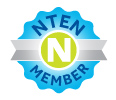.NGO
The Nonprofit Web Application Platform
1. EXECUTIVE SUMMARY
1.1. The Problem
Non-governmental organizations (NGOs) face significant barriers to using Internet technologies to improve their ability to fulfill their mission. In a technology environment dominated by Fortune 500 corporations and .COMs, NGOs lack access to technology that is affordable, meets their unique business processes, and evolves as nonprofits adapt their processes to interact with their constituencies using technology.
Without access, NGOs will never discover how to deploy state-of-the-art, mission-focused, Internet technologies. Mission-driven NGO technology is at risk of forever being relegated to being generations behind the for-profit sector, consisting of outdated, obsolete, inefficient tools.
1.2. The Opportunity
In spite of the barriers to mission-driven NGO technology, a number of leading NGOs are building mission-driven web applications today, often forced by limited resources into using inferior technologies originally designed for the needs of corporations with vast armies of technical staff. By bringing these organizations together to create the .NGO platform under an open source development model, the partners can transcend their resource constraints to create state-of-the-art, mission-driven, NGO web applications. Applications built to meet the needs of NGOs.
The Open Source software movement has created a model of software development that can vault to mission-driven NGO technology to standing shoulder-to-shoulder with its for-profit sector counterparts. The open source technology development model -- where anyone can improve technology because it is liberated from the legal constraints of intellectual property, as long as improvements are subsequently contributed to the community for others to improve upon -- represents an unrealized opportunity for the nonprofit sector to develop and disseminate technology that is mission driven. As technology development environments become more accessible, nonprofits can mould technology in their own image.
1.3. The Plan
The .NGO project will bring together organizations that are already funded and building web applications. Through self-selection, a subset of these organizations will be supported in creating a state-of-the-art, open source web application platform common to all participants. Their diverse applications will ride on top of the application platform, much the same way that MS Word rides atop MS Windows.
Compared with autonomous efforts, such a platform reduces total software development costs to all participating organizations, increases the functionality available to end users in each of the applications, and expands the number of organizations capable of using mission driven information technology.
The .NGO initiative has three goals:
- Bring nonprofit leaders currently developing web applications into a forum to explore how open-source application development can improve their current and future applications projects. (Phase One)
- Explore the possibility of standardizing on a single technology platform, allowing the partners to share resources and radically reduce the cost of application development.
- Develop a concrete action plan to enable participating partners to build a joint, open-source platform for their web applications. (Phase Two)
To achieve these goals, .NGO will conduct four national meetings. The first, sponsored by Stanford University and web cast nationally, will present an unbiased assessment of major open source technologies relevant to mission-driven NGO web applications. This essentially provides the menu of technologies that can be chosen to form the core of the .NGO platform.
Two additional regional meetings will facilitate the process of evaluating and agreeing upon a single technology platform.
The last meeting, sponsored by the Alliance for Community Technology/ University of Michigan, will bring together committed participants to develop a concrete work plan to map out the creation of the .NGO platform.
David Geilhufe and Vlad Wielbut will staff the project. A steering committee composed of 12 leaders in community technology will provide governance.
The project requires $50,000 to complete, with in-kind commitments already received from Stanford University and the Alliance for Community Technology. Potential funders are asked to consider contributions of $50,000 or $25,000.
WHAT IS A WEB APPLICATION PLATFORM?
A platform provides the shared building blocks for web applications. Almost every web application needs some of the same functionality- security, permissions, content management, authentication, etc. Rather than reinvent the wheel each time a new application is built, starting from a platform enables faster development times, cheaper projects, and more extensive functionality.
WHY NOT A COMMERCIAL SOLUTION?
Commercial solutions are costly. A Fortune 500 firm make the large investment because they can deploy the software across the entire corporation. Sharing a web application across a network of human rights organizations, for example, would cost tens of thousands of dollars to each organization.

